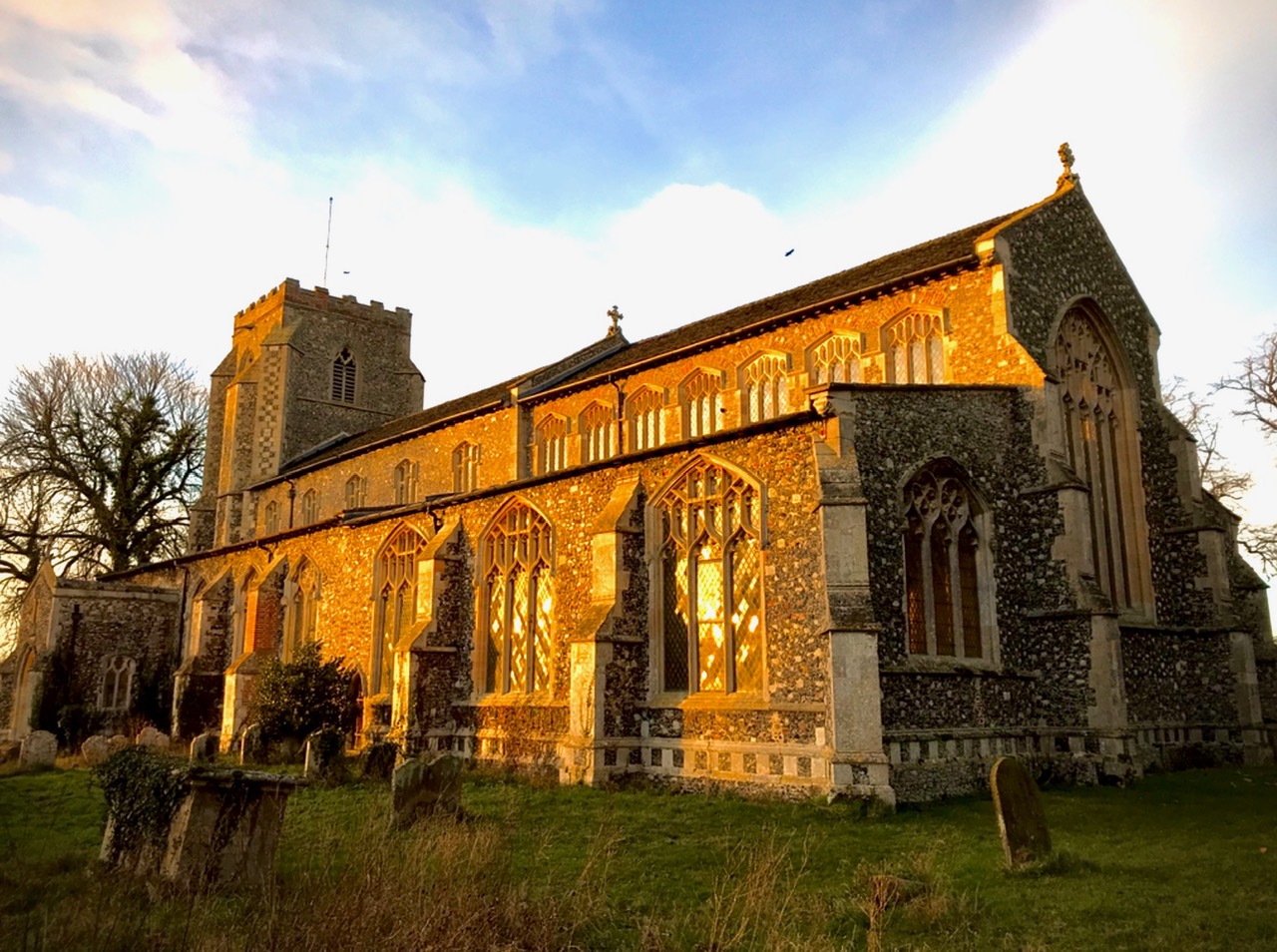Reblogged from A Medieval Potpourri sparkypus.com

St Andrew’s Church, Wingfield, Suffolk. Mausoleum of the de la Poles.
You know when the great Sir Nikolaus Pevsner was ‘impressed’ with a church then it must indeed be rather special (1). And St Andrew’s with its soaring clerestories, nave roof with arched braces resting on figures of winged angels, charming ‘Decorated’ window tracery of flower petals and the rood loft reached by two stairways does not disappoint. Combine all that with some of the finest 15th century medieval monuments in England and it takes some beating.
Founded by Sir John Wingfield d.1361 improvements to the church was carried out by both his son in law Michael de la Pole First Earl of Suffolk and in his turn by his son, Michael de la Pole, Second Earl of Suffolk d.1415. The improvements made by the second Earl are described by Pevsner as the ‘real glory‘ of the church and the monuments of the Earl and Katherine Stafford his wife lie today between the chancel and the chapel which he built.
Sir John Wingfield c. 1307- d. 1361.
Sir John’s monument lies in the north side of the chancel. Held in high esteem by Edward of Woodstock, Prince of Wales known as the Black Prince, who in 1356 appointed him Chief Administrator of the Prince of Wales and in October 1359 Master of the Household and Prince’s Councillor. The Black Prince would later pay £57 13 4d for his funeral (2). He left much of his wealth for the rebuilding of St. Andrew’s Church as well as the foundation of a chantry college and to make Wingfield a collegiate church. These wishes his widow, Eleanor/Alianore, would help to arrange. Sir John’s monument is much worn now but the etchings by Charles A Stothard in the early 19th century have captured what it once would have looked like.

Sir John Wingfield’s effigy Wingfield Church. Etching by Charles A Stothard.
SIR MICHAEL de la POLE, FIRST EARL OF SUFFOLK c. 1330-1389
Although not buried at Wingfield, Sir Michael de la Pole’s story should be touched upon to better understand the link of the de la Poles to Wingfield. Sir Michael was the eldest son of Sir William de la Pole d. 1366, a financier, successful wool merchant and entrepreneur from Kingston upon Hull. In 1361, the year of her father’s death, the 30 year old Sir Michael married Sir John Wingfield’s 13 year old daughter and heiress, Katherine (b.c1349 d.1385). Her father’s death shortly before the marriage brought a ‘dowry of substantial estates‘ (3). Sir Michael also had links with Edward ‘the Black Prince’ and it may be that it was the Black Prince’s patronage helped with the Wingfield marriage. Sir Michael had come a long way. As historian Anthony Emery points out, the de la Poles story is a classic example of how a rapid rise in social advancement was possible from a wool merchant to an earldom in two generations to even a heir presumptive four generations later. In 1362 following his father in law’s death and under the terms of his will, Sir Michael and his young wife would establish the college of priests at Wingfield and rebuild much of the church ‘sumptuoso’. After a busy career with some ups and some downs, and which I do not have space to go into here, Sir Michael was convicted of treason by the Merciless Parliament in 1388. Being a favourite of Richard II had made him a scapegoat for the king’s enemies. Escaping to France he was out of reach of those who wanted him dead but was to die shortly after in Paris on the 5 September 1389. He would be brought home to England to be buried alongside his wife, who had died around the onset of his downfall in 1385, in the Carthusian Priory, Kingston upon Hull.
To continue reading click here.

4 comments